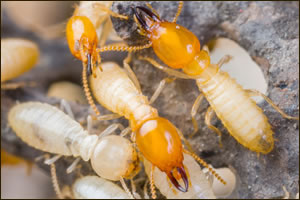 The most common termite inspection request happens when someone is buying or selling a home. In most states, it is necessary to have a WDI report. This is a Wood destroying Insect report. This should be done by a certified WDI expert licensed in your state. Termite Inspections are fairly simple and should not take more than a hour to complete. Banks and lenders use these reports as protective measures to insure the building has no structural damage associated with wood destroying insects.
The most common termite inspection request happens when someone is buying or selling a home. In most states, it is necessary to have a WDI report. This is a Wood destroying Insect report. This should be done by a certified WDI expert licensed in your state. Termite Inspections are fairly simple and should not take more than a hour to complete. Banks and lenders use these reports as protective measures to insure the building has no structural damage associated with wood destroying insects.
The termite inspector is looking for signs that wood destroying insects are present. This includes what is called frass (poo), wood damage, dead specimens, foundation wall cracks, wood debris around the home, and the presence or termites in planter beds around the home.
Who to call for a Termite Inspection?
Most lending institutions will set up this termite or wood destroying insect inspection for you. If you find termites around your home and would like to have your home inspected, you can contact the professional listed here in your local area. There is usually a nominal charge for a termite inspection. They rarely cost over $100.00. Make sure the company you hire has the proper termite inspector license and they are competent at what they are doing. All they companies that are listed here are have termite control licenses to perform these services.
What does a WDIR Consist of?
WDIR usuall consist of 5 sections. Some states have more sections, several states have less:
1) The first section is about the property and who requested the report. It also has areas to list all the structures and fences on the property.
2) Section 2 lists all the areas that the inspector deems to be inaccessible. This is usually crawlspaces that are less than 18 inches high or attics without stairs connected. This will also be the section where the inspectors indicates there are boxes and other objects that may prohibit seeing any damage.
3) Visible evidence from any type of wood destroying insects such as termites, beetles or possibly wood destroying bees.
4) NO visible evidence found. This is the box that the inspector will fill out should they not find any evidence or wood destroying insects.
5) This section is where the inspector makes an indication that the conditions are conductive to termites or the conditions favor the presence of termites. These conditions must usually be reported and corrected before any treatment can be applied.
These are the five sections that are on a WDIR (Wood Destroying Insect Report). A incomplete WDIR is worthless. Make sure the inspector completely fills the paperwork out and accurately represents the property. Some unprofessional Pest control companies have a lot to gain by inaccurately representing your property. Make sure the inspector shows you any damage or photos of the damage with your camera. Find a verified termite inspector. Use the navigation on the right. First choose your state, then choose the city that is closest to you. Call the number on the page to schedule your termite inspection.
